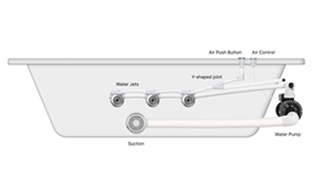Hot Tub Pump VS. Blower: What's the Difference and Which One Do You Need?
Quickly Distinguishing Between a Hot Tub Pump and Air Blower
Features | Hot Tub Pump | Air Blower |
Main Function | Pressurizes water for basic massage | Injects air to enhance the massage effect |
Operation | Driven by a motor to circulate water through the heater and filter | Driven by a motor to power a fan, compressing and injecting air into the water |
Water Pressure Impact | Low water pressure, providing a gentler massage | Increases water pressure through a "whirlpool" effect, boosting massage intensity |
| Effect on Water Temperature | Helps maintain the set water temperature | Blows cool air, potentially lowering water temperature, requiring additional heating or higher temperature settings to compensate |
| Energy Consumption | Typically 1-2 horsepower, with higher energy consumption | Typically 1-2 horsepower, but consumes slightly less energy than the pump |
| Noise | Usually low, but soundproofing may be needed | Typically higher, requiring soundproofing installation |
| Cost | Usually a standard feature, lower cost | An optional accessory, slightly higher cost |
Pump Types and Features

Types and Features of Air Blowers

Do You Need Both a Pump and a Blower?
SPA Pump and Blower Q&A


































